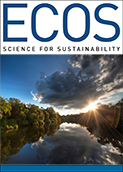
|
Published: 12 December 2014
Listening to the land
Imagine yourself in the middle of the rainforest. Close your eyes. What do you hear? Perhaps the rustling of ground birds scratching around in the leaf litter, the sudden whip of a whipbird, the machine gun rattle of Lewin’s honeyeater, the swish of the high canopy as the wind passes overhead.
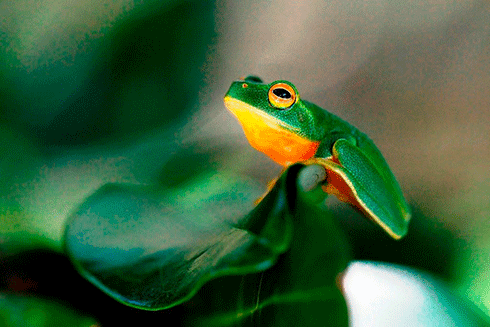
|
|
The unique identifying call of the male graceful tree frog – native to eastern Queensland, and north-eastern New South Wales – can often be heard in summer, after rain. Credit: May-Le Ng
|
Now picture yourself standing in an open field. What do you hear now? The constant buzzing of insects at work, the roar of the wind, the caw of an overhead crow, and the quardle of a distant magpie. Perhaps you even hear the sound of a car passing on a nearby road.
We don’t need our eyes to tell us where we are, the sounds tell us. The combination of animal inhabitants, the way the wind and rain sounds on different vegetation and any human activity gives each community its own sound. The collection of all the sounds in the environment, including man-made, biological and geophysical sounds, is called a soundscape.
Lots of time and money is spent on management and rehabilitation of landscapes to encourage biodiversity. To monitor the progress of rehabilitation, we would usually send ecologists out to the rehabilitation sites for days to identify animals and assess vegetation condition.
We’ve been looking at a different and less invasive way of monitoring change – what if we could use soundscapes to monitor changes to vegetation? Plants don’t vocalise the way that animals do, but different vegetation communities have different soundscapes.
Acoustic monitoring has been around for years, and has been applied to noise pollution in urban areas and for biological studies of specific species. However, the use of all sound in a landscape (i.e. using soundscapes) as opposed to the sounds made by specific sources only began in the last decade.
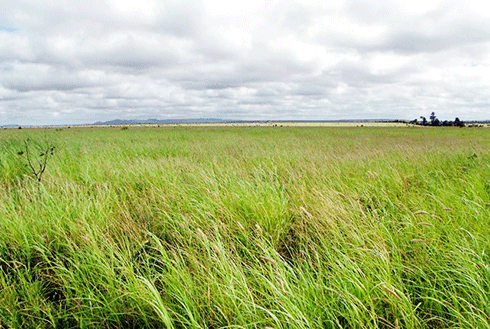
|
|
Every vegetation community sounds different. For example, the soundscape of cleared grazing land at Moranbah (above) sounds quite different to... Credit: May-Le Ng
|
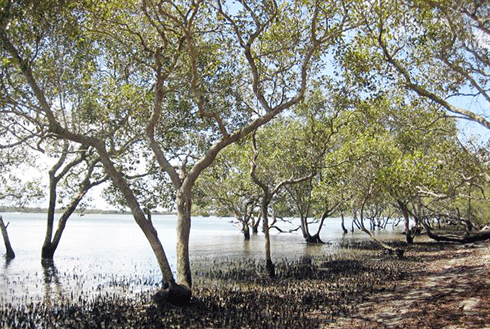
|
|
...the sound of a mangrove community at South Stradbroke Island, or... Credit: May-Le Ng
|
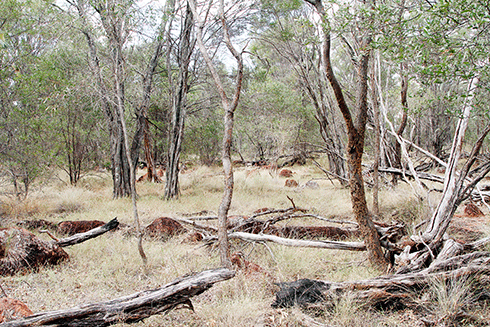
|
|
...the sounds of an acacia woodland, Moranbah, or... Credit: May-Le Ng
|
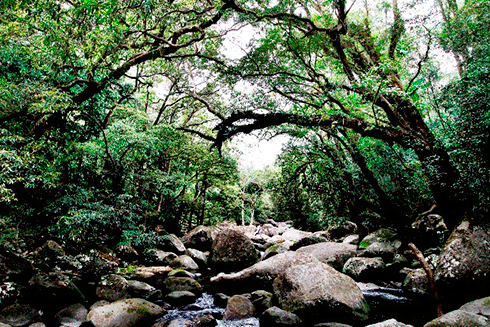
|
|
...the soundscape of tropical rainforest in the Daintree National Park. Credit: May-Le Ng
|
Sound can be visualised using a special graph called a spectrogram, which shows the most powerful frequencies in a recording. The different frequencies measured in hertz or Hz can be thought of in terms of familiar sounds:
-
human hearing falls within the range 20 Hz–20 kHz
-
thunder, wind and rain have low frequencies, below 2 kHz
-
man-made sounds are lower than 4 kHz
-
insect sounds are mostly 5–6 kHz
-
bird sounds range in frequencies, with larger birds in the lower frequencies (1–2 kHz) and smaller birds in the higher frequencies (7–8 kHz)
-
some bats can be heard if they call below 15 kHz but most bats call at a much higher frequency (up to 200 kHz).
Breaking the spectrograms up into bandwidths allows differences between soundscapes to be quantified, giving us a numerical measure of the differences between restored sites.
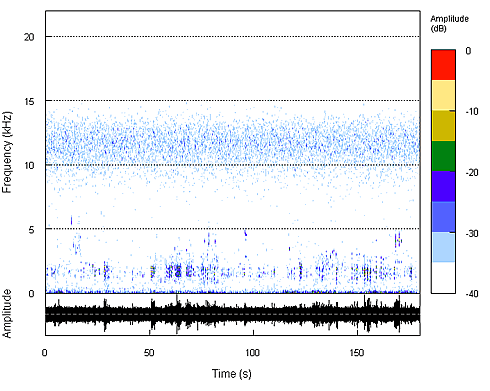
|
|
Acoustic profile of the dawn chorus in cleared grazing land dominated by larger bodied birds. The vertical axis represents amplitude and frequency (kHz) while the horizontal axis represents time (s). To play the associated sound file, click here. Credit: May-Le Ng/O2 Ecology |
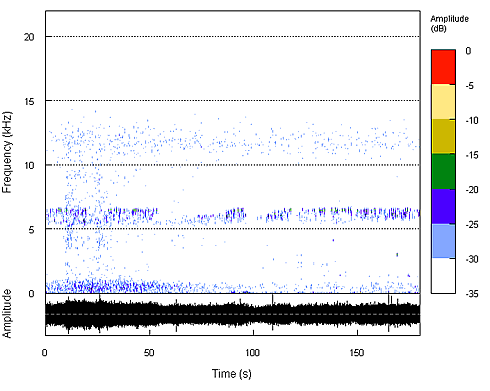
|
|
Acoustic profile recorded on a windy, rainy morning in a patch of ironbark woodland dominated by insects. To play the associated sound file, click here. Credit: May-Le Ng/O2 Ecology |
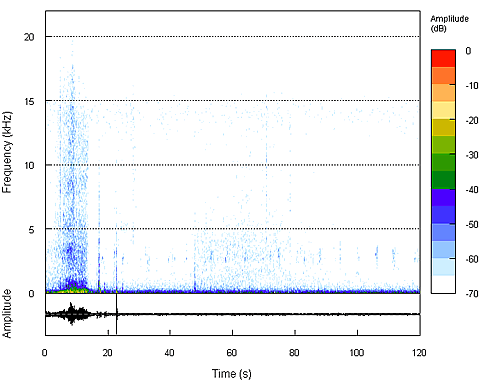
|
|
Acoustic profile of an afternoon in a eucalypt forest as a vehicle passes through. To play the associated sound file, click here. Credit: May-Le Ng/O2 Ecology |
O2 Ecology and the Condamine Alliance have been pioneering soundscape research within the Condamine catchment in South-East Queensland.
We completed a pilot study to test the usefulness of soundscapes in monitoring changes to vegetation, recording soundscapes and assessing the associated vegetation condition from eight locations over three weeks.
We found that locations with different vegetation conditions had detectable differences in their soundscapes. Using the soundscape characteristics, we could determine whether a patch was cleared, regrowth or remnant vegetation. This means that we could potentially use soundscapes to remotely monitor the progress of restoration activities.
This could mean big savings on monitoring costs for restoration projects, so more of the limited money available for restoration could be used for management.
We hope to continue with this research to test the relationships for different ecosystem types, geographical regions and seasons before applying the method to a wider range of monitoring projects.
So while monitoring for habitat condition and wildlife can be expensive and time-consuming for environmental projects with often-limited funds, soundscape monitoring can provide a less invasive, less labour-intensive and more cost-effective alternative to more traditional monitoring approaches.
May-Le Ng works at O2 Ecology in Brisbane, Queensland, an ecological and environmental consultancy that has carried out projects in areas such as mining, oil and gas exploration and development, infrastructure, planning and property development, and rehabilitation, monitoring and conservation research.


